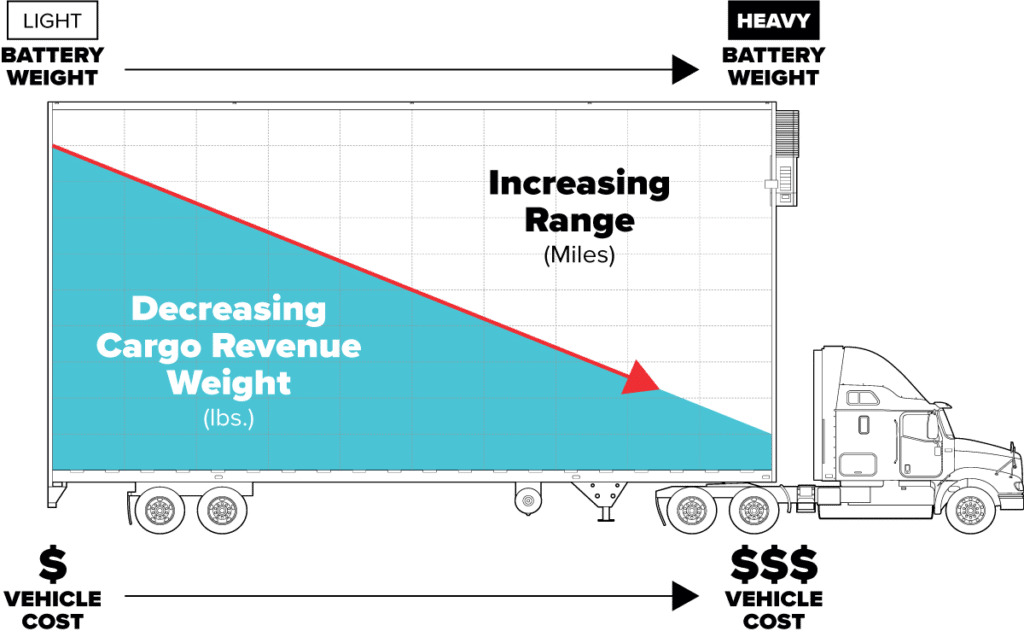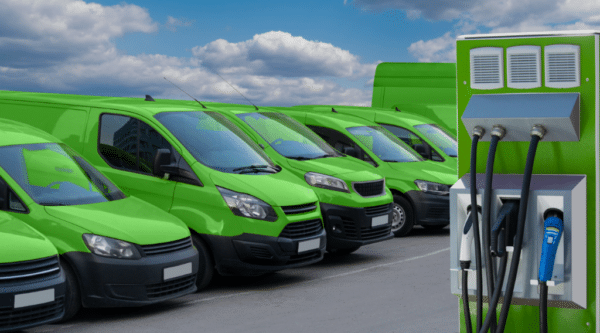Electrifying a fleet involves more than just purchasing electric vehicles (EVs). Successful EV deployment requires comprehensive planning and robust charging infrastructure. Here are 10 critical site factors to consider when electrifying your fleet:
- Perform a Fleet Analysis: Review all trucks in your fleet, their routes, and payloads to determine which vehicles can be electrified now. (As Electrada’s white paper on fleet electrification indicates, most fleet vehicles in classes 3 to 8 are ready for electrification now.) This helps in making informed decisions and optimizing the fleet’s efficiency.
- Understand Range, Payload, and Charging Times: EVs have range limits and add weight to the vehicle. Match EVs to appropriate applications considering these limitations. Be aware of charging times, whether full charges are necessary, and the optimal charging schedules.

- Plan for Future Growth: Design your charging infrastructure to accommodate the future expansion of your EV fleet, ensuring it can handle increased demand. This futureproofing approach is crucial for long-term sustainability.
- Select Appropriate EVSE: Choose chargers that meet your vehicles’ needs to keep costs low. Level 1 EVSE operates on 120V, suitable for light-duty vehicles. Level 2 uses 240V, offering 2.5 to 19.2 kW power, while Level 3 (DC Fast Charging) provides 15 to 350 kW. Partnering with a Charging-as-a-Service provider can ensure a smooth transition, especially if upfront EVSE costs are fully covered, as is the case with Electrada’s 360 Charging-as-a-Service (CaaS).
- Design Infrastructure and Depot Layout: Assess site constraints and utility requirements for optimal charger placement. The Federal Energy Management Program (FEMP) suggests considering factors such as power availability, cord management, walkways, mounting, lighting, and weather protection to maximize efficiency and safety.
- Position Chargers Wisely: Ideally, chargers should be near vehicle parking areas. Short distances from electric service equipment to the EVSE reduce costs. Transformer locations may also dictate charger placement.
- Upgrade Electrical Services: Larger fleets will require upgraded electric services. Collaborate with local utilities to determine the additional power needed to support the increased demand from multiple EVs.
- Obtain Permits and Approvals: Work with design and engineering firms to ensure all necessary permits, licenses, and approvals are secured before construction begins. This helps avoid delays and ensures compliance with local regulations.
- Manage Installation Timelines: Coordinate with utilities and construction firms to set realistic timelines. Regular updates and communication help adjust plans as needed, ensuring the project stays on track.

- Minimize Operational Impact: Communicate construction timelines with all site personnel to prepare for adjustments. This minimizes disruption to normal operations and ensures the infrastructure installation proceeds smoothly.
Site electrification is a complex process. Partnering with an experienced CaaS provider like Electrada can meaningfully simplify it. Our team brings decades of relevant multisector experience that enables it to address potential challenges and provide practical solutions for integrating EVs into your fleet with tailored, fully capitalized, and performance guaranteed EV charging infrastructure to power them. Get in touch to learn how to get started.



